
Integrated Agri-Aquaculture as a Solution for Food Security in Egypt
*Corresponding Author(s):
Ibrahim GaafarWater Management Research Institute, National Water Research Center, NWRC Building, Delta Barrage, Egypt
Tel:+20 1020 465654,
Email:igaafar@yahoo.com
Abstract
Food security is one of the main problems which facing the Egyptian Government nowadays. Bread is the main component of Egyptian meals. The shortage in wheat production and problems of importing it from abroad is a chronic headache for the successive cabinets. Gap between the national production and needs can be decrease using the fish ponds as land for wheat cultivation using the drainage water which used to be released to the Northern Lakes and Mediterranean and new fish ponds can be created using part of this water.
The study was conducted at two levels, firstly a pilot experiment was carried out in Qarada research station of the water management research institute and two fish ponds close to Burullus Lake in Kafr El Sheikh to check the possibility of cultivating wheat in fish ponds and to economically compare between the field and pond wheat. Secondly an investigation for generalization the idea in all coastal fish ponds and reclaim new lands using the drainage water to be cultivated with wheat.
The study concluded that the majority of the fish ponds salinity is suitable for cultivation of wheat which can increase the national production with about 1.5 million ton (18% of the total national production) as well as increase the water use efficiency. Wheat cultivation in fish ponds is a must and the ministries of water resources and irrigation and agriculture and land reclamation have to espouse this idea to overcome the problems of shortage of bread, increase the water use efficiency and increase the income of the owners of farms.
Keywords
INTRODUCTION
The lack of ability of Egypt to produce sufficient wheat for domestic consumption are: A) The total cultivated area represents less than one quarter of the amount consumed by the population; B) Egypt had one of the highest rates of wheat consumption per capita of any country in the world (200 Kg per capita, compared with a world average of less than 60 to 75 Kg per capita); C) The population growth rate (2.1% annually) increases more than the increase of wheat production; D) Little efforts are made for improving salt tolerant wheat crops, e.g., only two genotypes (Sakha 8 and Sakha 93) among Egyptian wheat genotypes are tolerate to salinity; and e) The competition among cultivated lands with wheat, forage and cotton crops [3].
Egypt is importing wheat for about 276 million US $ annually [4]. Therefore, the Egyptian Government needs to make a great effort to increase wheat productivity. Extending wheat growing outside the Nile valley is the first effort toward overcoming wheat problems. No more land for wheat cultivation except the fish ponds, which offer an opportunity as a complementary action to increase farmer’s income and in turn reduce the total import to reduce the hard currency problem; therefore, integrated agri-aquaculture is an important solution for wheat production. Especially for the new wheat varieties, which tolerate salinity and water saturation conditions of fish ponds.
Most aquaculture activities are located in the Northern Nile Delta region, with fish farms usually found clustered in the areas surrounding the four Delta Lakes. According to digital maps and remote sensing directorate, master information center of ministry of water resources and irrigation the total area of fish ponds in Egypt amounted to 254,387 feddans. The area is scattered around Manzala, Burullus, Edco and Mariout Lakes.
The study was carried out at two levels; firstly a pilot study carried out in Qarada research station of the water management research institute [5], national water research center and the fish ponds around Burullus Lake area to verify the possibility of wheat cultivation in fish ponds and compare economically between field and pond wheat. The second level is the national level in which the data of fish ponds and drain water quality were collected to estimate the total lands which can be cultivated and the total production and return.
MATERIALS AND METHODS
Pilot level
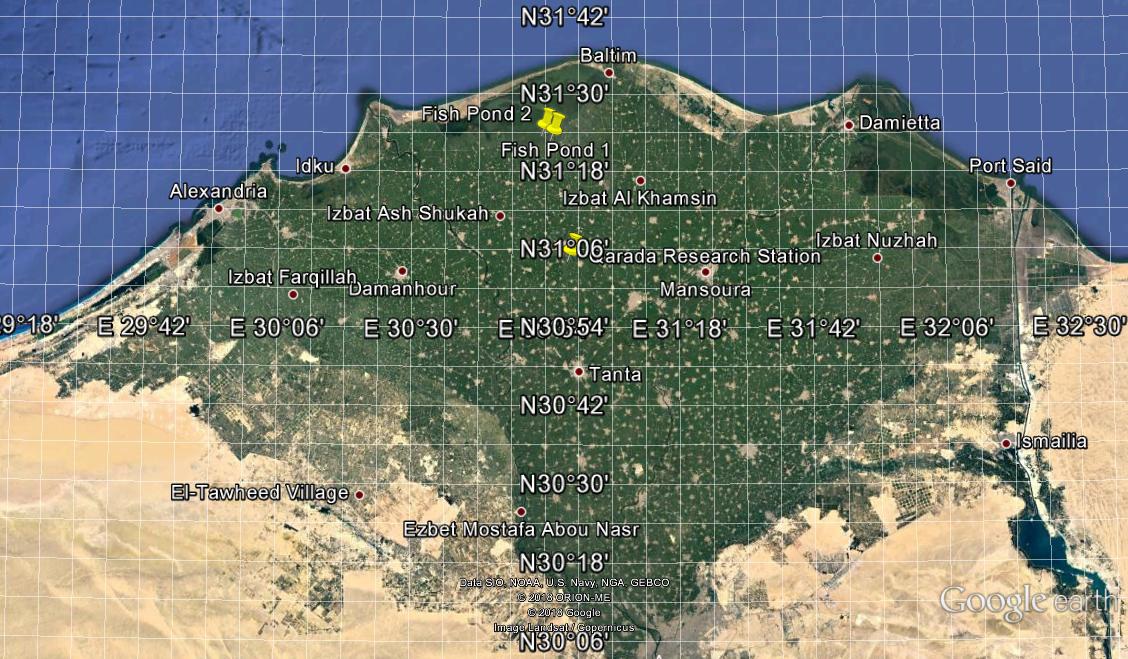 Figure 1: Location of fish ponds and research station field.
Figure 1: Location of fish ponds and research station field.On the other hand a field experiment carried out at the Qarada research station of the water management research institute on an area of 3 feddans. The planting date of wheat was on the second week of November and the harvesting date was on first week of May. All the agronomic practices and fertilizer amounts were done according to farmer’s experience. Superphosphate at rate of 250 Kg/feddan (15.5% P2O5), potassium sulfate at rate of 50 Kg/feddan (48% K2O) and ammonium sulfate at rate of 250 Kg/feddan (20.5% N) were used. Superphosphate was added at soil preparation, potassium sulfate was divided in two doses, the first one was added after thinning and the second one after 15 days of thinning. Ammonium sulfate was divided into three doses; the first one was added after thinning, the second one after 15 days of thinning and the last one after 30 days of thinning.
The total added water for the field wheat was estimated at 2220 m3/feddan. The quantity of water was measured by flow meter installed at the intake of the station. The added water for the first fish pond was 420 m3/feddan meanwhile for the second one was almost zero. The quantity of water was measured by installing water level sensor at the entrance of both farms, immediately after the Sakia for the first farm and the pump for the second one to determine the operation hours of the pump. The operation time is the period in which the water level increases than the regular level of the inlet channel as shown in figure 2. The discharge of the pump was calibrated several times using electromagnetic flow meter during the summer season. The water volume calculated according the following equation:
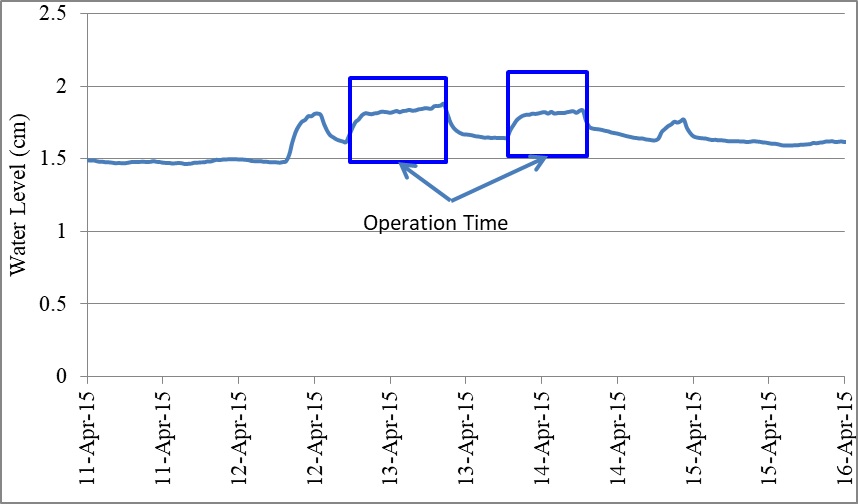 Figure 2: Water level in the entrance of fish ponds.
Figure 2: Water level in the entrance of fish ponds.Water Volume = Operation Time × Calibrated Discharge
Drain water quality
| Parameter | November | December | January | February | March | April |
| PS NO. 7 in 2013-2014 | ||||||
| pH | 7.66 | 7.71 | 7.80 | 7.69 | 8.06 | 8.03 |
| EC (ds/m) | 3.69 | 3.64 | 2.45 | 4.29 | 5.00 | 4.66 |
| Qarada Research Station | ||||||
| pH | 7.4 | 7.4 | 7.5 | 7.4 | 7.5 | 7.5 |
|
EC (ds/m) |
0.83 | 0.72 | 0.75 | 0.79 | 0.84 | 0.73 |
| Parameters | Depth of Soil (cm) | |||||
| 0-20 | 20-40 | 40-60 | ||||
| Qarada | Fish pond | Qarada | Fish pond | Qarada | Fish pond | |
| Physical Properties | ||||||
| Clay content (%) | 44.1 | 41.5 | 40 | 42 | 40 | 39.5 |
| Silt content (%) | 28.6 | 56.9 | 29.7 | 46.3 | 31 | 44.3 |
| Sand content (%) | 27.3 | 1.6 | 29.3 | 11.7 | 29 | 16.2 |
| Dry bulk density (g/cm-3) | 1.28 | 1.47 | 1.34 | 1.42 | 1.35 | 1.37 |
| Wilting point (%) | 26.7 | 28.4 | 24.3 | 26.6 | 24.2 | 25.3 |
| Field capacity (%) | 40.3 | 41.8 | 37.8 | 40.2 | 37.8 | 38.6 |
| Saturation capacity (%) | 51.7 | 53.8 | 49.6 | 52.4 | 49 | 50.4 |
| Chemical Properties | ||||||
| pH 1:5 | 8.2 | 8.4 | 8 | 8.3 | 8.2 | 8.25 |
| EC1:5 (dS m-1) | 3.7 | 2.1 | 3.4 | 2.4 | 2.9 | 2.9 |
| SAR | 24.5 | 23.6 | 23 | 22.8 | 22.8 | 22.4 |
Economic analysis
Total Cost (L.E/feddan) = Land Preparation + Seeds + Fertilizer + Labor + Irrigation + Harvesting
Total Return (L.E/feddan) = Grain Price + Straw Price
Net Return (L.E/feddan) = Total Return - Total Costs
Water Productivity (L.E/m3) = Net Return/Added Water
National level
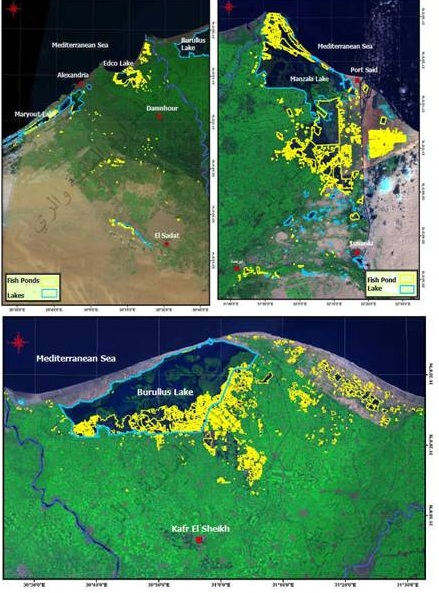 Figure 3: Locations of fish ponds around the Northern Lakes.
Figure 3: Locations of fish ponds around the Northern Lakes.The salinity of the drains feeding the Northern Lakes and their surrounding area were monitoring long time ago by drainage research institute and their data used to publish in annual basis. Sample from these data are presented in figure 4. The salinity ranges between 2.3 and 4.8 ds/m3. It is clear that the pilot area of fish ponds located at the most saline part of the fish ponds all over the costal Lake areas which means that the experiment can be replicated anywhere within the domain of the Northern Lakes which have less drains salinity and pH within the permissible limits for agriculture according the law 48.
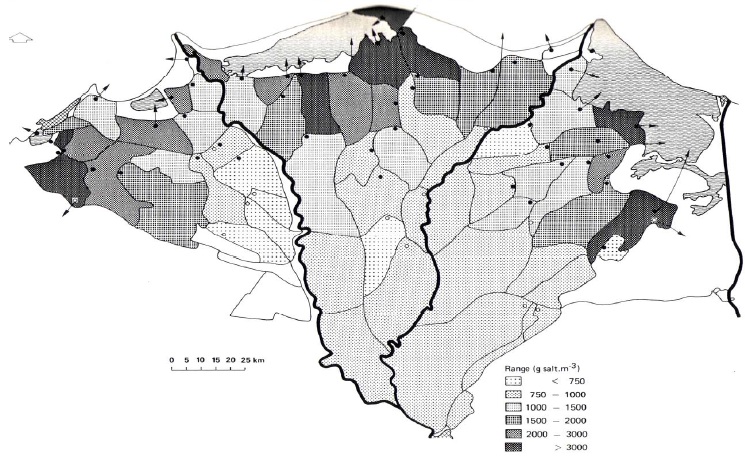 Figure 4: Delta drainage water salinity.
Figure 4: Delta drainage water salinity.RESULTS AND DISCUSSION
Pilot level
From an economic point of view, the cultivation of wheat is very important, since it happens during the off season (winter) of the ponds, the high productivity and the short duration in land and the minimal costs. It is only cultivated based on the water infiltrated into the ponds from surrounding ponds and drains and sometimes with very minor quantity of added water and minor quantity of fertilizers.
As shown in figure 5, the wheat productions of the two farms were healthy despite the fertilizer dose was less than the normal dose of the field wheat due to the fish residuals, which are very rich in nitrogen and phosphorus. A complete economic evaluation was done. Table 3 indicates that the net return of the wheat cultivated in the fish ponds is higher than the field one by about 30% and 12% for the first and second pond respectively keeping in mind that the total cost is only about 44% and 39% of the field wheat cost. The added water is almost 20% and 0.0% of the field wheat. This quantity of drainage water is used at the last point of the drain immediately before losing it to Burullus Lake then to the Mediterranean Sea, which increases the water use efficiency of drainage water to almost 100% before depleting it to the sea.
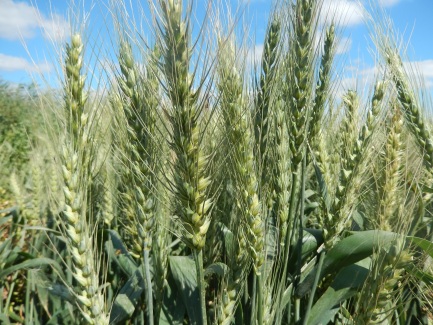 Figure 5: Sample of the wheat production.
Figure 5: Sample of the wheat production.| Item | Unit | Field Wheat | Pond Wheat 1 | % | Pond Wheat 2 | % |
| Land preparation | L.E/feddan | 600 | 0 | 0 | 0 | 0 |
| Seeds | L.E/feddan | 350 | 400 | 114 | 400 | 114 |
| Fertilizer | L.E/feddan | 1,375 | 110 | 8 | 0 | 0 |
| Labour | L.E/feddan | 1,000 | 200 | 20 | 200 | 20 |
| Irrigation | L.E/feddan | 400 | 40 | 10 | 0 | 0 |
| Harvesting | L.E/feddan | 1,700 | 1,630 | 96 | 1,500 | 88 |
| Total cost | L.E/feddan | 5,425 | 2,380 | 44 | 2,100 | 39 |
| Grain yield | Kg/feddan | 2,468 | 1,800 | 73 | 1,500 | 61 |
| Grain price | L.E/feddan | 6,909 | 5,040 | 204 | 4,200 | 170 |
| Straw yield | Kg/feddan | 1,450 | 1,370 | 94 | 1,310 | 90 |
| Straw price | L.E/feddan | 2,030 | 1,918 | 132 | 1,834 | 126 |
| Total return | L.E/feddan | 8,939 | 6,958 | 78 | 6,034 | 68 |
| Net return | L.E/feddan | 3,514 | 4,578 | 130 | 3,934 | 112 |
| Added water | m3 | 2,220 | 420 | 19 | 0 | 0 |
| Water productivity | L.E/m3 | 2 | 11 | 689 | - | - |
National level
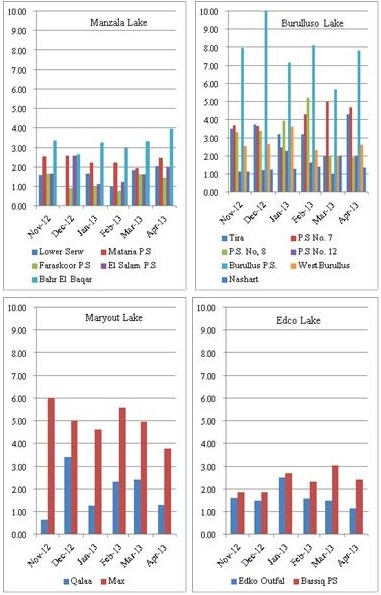 Figure 6: Salinity of drainage water of Northern Delta Lakes.
Figure 6: Salinity of drainage water of Northern Delta Lakes.Cultivation of legal and illegal fish ponds with wheat can increase the national production of wheat by about 12%. Areas located at North and East of Burullus Lake, South of Mariout Lake and South East of Manzala Lake (near Ismailia) can be used as a fish pond or can be reclaimed by the drainage water for two or three years to decrease the soil salinity then cultivated with wheat. The soil salinity of Lake Manzala Engineered wetland area decreased from 6.7 ds/l to 2.4 ds/l in about 1.5 year of filling the ponds with drainage water from Bahr El Baqar Drain, which allowed papyrus, which is not salt tolerant crop, to be cultivated there [8].
Also Mohamed Taha [9], proved that soil salinity is not the main dominant parameter for crops cultivation in saturated soil. He used the drainage water of El Gharbia Drain to irrigate papyrus in surface wetland pond. These areas can increase the total national wheat production by another 6% with a total of 18% of the national production.
Some water is required to flow out of the Nile system for environmental needs, such as, to drain out salts, to carry away pollutants that would otherwise concentrate in the Nile water, and to maintain coastal estuaries for fishing. First estimate of minimum outflow is in the order of 8 BCM per year but the minimum outflow requirement is an important value that deserves much more research attention [10]. Drainage research institute [6], estimated the drainage disposal in northern Lakes and Mediterranean at 14.327 BCM which mean that there is about 6.327 BCM can be saved and used in fish ponds then wheat cultivation fields before dispose it to the Lakes (i.e., divert part of Bahr El Baqar Drain near Ismailia to be used for land reclamation by fish ponds or sedimentation ponds in summer and wheat fields in winter.
CONCLUSION
On the pilot level,
• The healthy production of wheat in fish ponds indicated that the drainage water in Burullus area is valid for wheat cultivation and consequently the less saline drainage water at Manzala, Edco and Mariout Lakes can be used for wheat cultivation.
• Using the integrated agri-aquaculture technique can increase the total income of the farmers by about 12,000 L.E/feddan which is the price of grain and straw, save cost of land preparation and feed for the fish after the wheat season. Also, in remote areas such integration can help in producing affordable food sources for animal origin of surrounding residences.
• It is possible to increase water use efficiency through integrating agri-aquaculture by increasing productivity of water unit once from fish and other one from wheat especially at the end of the drain the water will deplete to the saline and polluted Lakes.
On the national level,
• An area of 370,000 feddans of legal and illegal fish ponds can be cultivated with wheat in winter season and an area of more than 150,000 feddan surrounding the Northern Lakes can be reclaimed with the drainage water before losing it in the Lakes. Within two or three years these lands can be cultivated which increase the national wheat production with about 18% of the current national production.
• Upstream areas such as west of Ismailia can be reclaimed and cultivated with wheat by diverting part of the discharge of Bahr El Baqar Drain as well as the desert west of Umoum Drain before losing their water in Manzala and Mariout Lakes respectively. This can add another area of 150,000 feddan to increase the total production using the drainage water and fish ponds to be one quarter of the national production.
ACKNOWLEDGEMENT
REFERENCES
- Wally A (2014) Wheat demand expands, corn stays steady and there’s continued reluctance to export rice. Gain Report, USDA Foreign Agricultural Service 1-17.
- Wheat Atlas-USDA (2015) Egypt. Wheat Atlas, USDA, Mexico.
- Salah El-Sayed el-Hendawy (2004) Salinity tolerance in Egyptian spring wheat genotypes. Munich, Germany. Pg no: 216.
- http://www.fao.org/ag/agl/aglw/aquastat/dbase/index2.jsp
- Water Management Research Institute (2015) Wheat water requirements under various water and agriculture treatments. Water Management Research Institute, Delta Barrage, Egypt.
- Drainage Research Institute (2011) Drainage water status in the Nile Delta. Drainage research institute, Cairo, Egypt.
- Digital maps and remote sensing directorate (2012) Master information center of ministry of water resources and irrigation. “Estimation of fish ponds in Egypt using remote sensing technique”.
- Gaafar I (2007) Optimum design and operation of free surface engineered wetlands in Egypt, Study case. Lake Manzala Engineered Wetland, Faculty of Engineering Ain Shams University, Cairo, Egypt.
- Mohamed Taha (2014) Bacteriological and chemical characteristics of Lake Burullus in Egypt, Faculty of Science, Azhar University, Assuot, Egypt.
- Molden D (1997) Accounting for water use and productivity. IIMI, Colombo, Sri Lanka, Pg no: 1-26.
Citation: Gaafar I (2018) Integrated Agri-Aquaculture as a Solution for Food Security in Egypt. J Aquac Fisheries 2: 009.
Copyright: © 2018 Ibrahim Gaafar, et al. This is an open-access article distributed under the terms of the Creative Commons Attribution License, which permits unrestricted use, distribution, and reproduction in any medium, provided the original author and source are credited.

